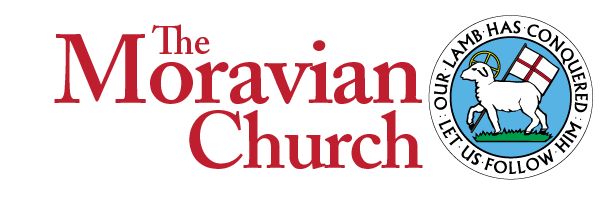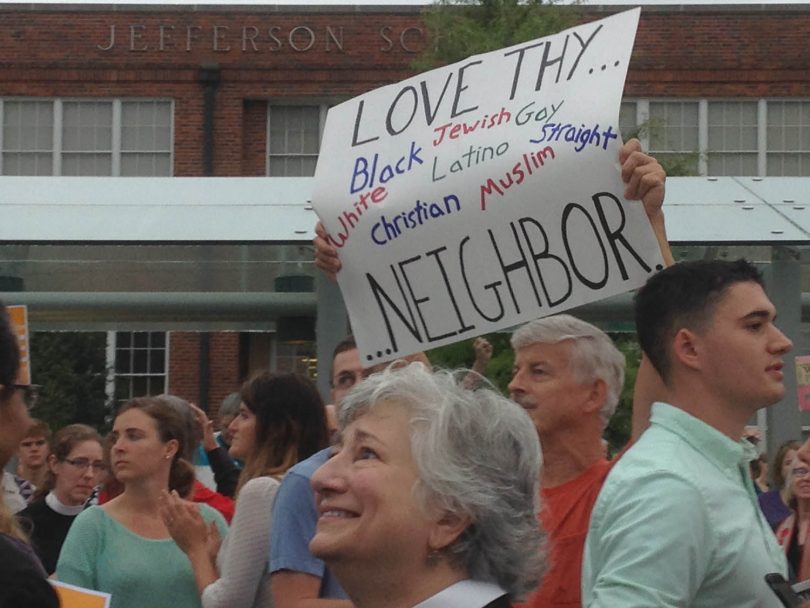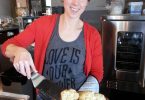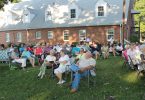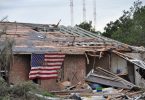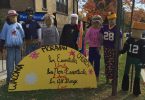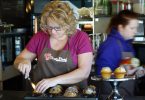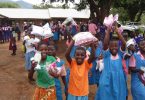An eyewitness account of events at Charlottesville
On Aug. 2, 2017, I received a call. The National Council of Churches had joined with Congregate Charlottesville, and they were calling for 1,000 white clergy to come to Charlottesville on Aug. 12, 2017, to confront and resist white supremacy through direct, non-violent action.
It was a call to stand in solidarity with the Charlottesville community, and to proclaim with “our bodies and our sanctuaries that God rejects white supremacy” and that “God is present with those hurt, angered, afraid and confused by this massive national event in our small town.” Our prayerful presence to stand for love in the midst of hatred, discrimination and intimidation was urgently needed.
I could not simply click on the next email and dismiss this call. It was my responsibility to stand for love and against hate as a human being, a Christian and a Moravian.
I had been standing, though so woefully imperfectly, against racism for almost all my life. As a young teenager, I suffered significant physical violence for taking a stand against racism in my own home; and a member of my extended family was the Grand Dragon of the local KKK, the terror of which still impacts our community today, as black and brown people from the county avoid our area based on its reputation for past Klan activities. I recall a morning in the early 1990s arriving early for worship at the Graceham Moravian Church to discover KKK materials scattered all over the church lawn. More importantly, I remember with gratitude to God the response of the Graceham congregation and members of the greater community – more than 500 people – who stood in opposition to the KKK in an event called “Thurmont United in Love,” with speakers and singing that proclaimed faith in the power of love and unity. Racism is a cancer that has, and is, affecting all of us locally and nationally.
The “Call for Help” from the National Council of Churches was Christ calling me. Two days later, I sent an email to Dr. Tim Wolfe, Professor of Sociology and Criminal Justice at Mt. St. Mary’s University in Emmitsburg, Maryland. Dr. Wolfe and several colleagues have been working with our local minister’s group, facilitating two anti-racism workshops and discussing ways of bringing people together to talk about race and racism. Dr. Wolfe, Sabrina Massett (a member of the Graceham congregation) and I all felt compelled to go to Charlottesville to help in any way we were needed.
Over the next several days, we received a number of emails about events that would take place on Aug. 12 and possible ways in which we could assist. The communications included clear warnings that there was a high risk of arrest, violence, injury, even death. I spent late Friday afternoon, Aug. 11, praying for peace and safety for all who would be in Charlottesville the next day, and studying and highlighting maps of downtown Charlottesville to get my bearings in a place I had never been. Just before leaving the church, I consecrated the elements for Sunday’s Aug. 13th Holy Communion.
We left Graceham a little after 3 a.m. on Saturday, Aug. 12, and arrived in Charlottesville about 7 a.m. We made our way to the First Baptist Church where a sunrise service had been held at 6 a.m. The service was just letting out, and people were gathering on the street and in the sanctuary to await instructions. Soon we walked from First Baptist to the Jefferson School City Center; the Jefferson School was Charlottesvillle’s only African American school between 1865 and 1951; and thanks to efforts of alumni, it now houses an African American cultural center. I sensed the apprehension as we were given numbers to call for legal assistance, and leaflets with “dos and don’ts” of opposition. One speaker encouraged us not to be dismayed, saying, “This is not a funeral.” Tragically, there would be a funeral as a result of the violence of white supremacists – for Heather Heyer; and for Virginia State Troopers H. Jay Cullen, and Berke M.M. Bates, who died having protected the citizens of Charlottesville.
From the Jefferson School we marched a short distance to McGuffey Park for which a permit had been obtained for our gathering. Then some of us went on to the First United Methodist Church (FUMC), located just across the street from Emancipation Park. The church was providing a safe space, access to emergency medical care, water, and hospitality. Tables in the parking lot served as a protective barricade, and clergy were asked to come immediately when called out beyond the tables to be a prayerful presence facing white supremacists or others who became aggressive.
The first time we were called, I stood to contain a group of young counter-protesters who identified themselves as “new communists” or anti-fascists. One pastor attempted to dissuade them from engaging in physical violence with the white supremacists, but they rejected this advice, and a “brawl” on the sidewalk in front of the church parking lot ensued in a matter of minutes. In response, the staff of FUMC called for a full lock down and everyone was directed to go immediately into the church. Several members of the anti-fascist group returned later for medical care for injuries they suffered in subsequent violence. To be clear, from our observation both at McGuffey Park and FUMC, the anti-fascists were a small group compared to all those who came to stand peacefully against hate, racism and bigotry.
The counter-protesters included clergy in cassocks, vestments and collars, and people of faith from numerous identifiable denominations wearing t-shirts and carrying signs of love, peace and inclusion, and denouncing bigotry and exclusion. Those of us who gathered in the parking lot at FUMC sang songs throughout the morning: “This Little Light of Mine,” “We Shall Overcome,” “I’ve Got Peace Like a River,” and others hymns of justice, hope and peace. I thought of those faithful, fearless Moravians who influenced John Wesley by singing during life-threatening storms. One white supremacist vehemently yelled out at us, “Look at you hiding behind your music.” This seemed bizarre to me. We were not hiding, we were in plain view. We chose to sing to show that we were not afraid of their threats and terror.
Throughout the morning we watched as the protesters, white supremacists, members of the KKK and neo-Nazis arrived to walk the block to Emancipation Park for the “Unite the Right” rally that was to begin at noon. They were armed for violence with rifles, bats, and clubs, waving flags with swastikas, carrying shields, their arms marked with badges of various symbols of hate. By now, we have all seen these images and heard the horrifying chants against blacks, Jews and homosexuals, and watched as they snapped a salute to Hitler.
The scene from the porch outside the sanctuary of the FUMC on the opposite side of the building overlooking Emancipation Park was traumatizing. From there our eyes were drawn to the police sharpshooters on the roof of another building, and then down to the street, where police surrounded the park, and there was an armored vehicle and one for transporting those who were arrested; a man planted a Confederate flag to hold one corner of the block. Our view of the park was partially blocked by mature trees, but we saw the blue clouds from exploding smoke bombs, smelled the tear gas and heard the sounds of hate, oppression and violence. We saw scores of counter-protesters walking orderly down the opposite street on the other side of the park.
At approximately 11:40 a.m., we began to hear that the police had declared the white supremacist rally an “unlawful assembly,” as a result of violence, and declared a local state of emergency. Police in full riot gear emerged from a bus in the street below and other officers entered one end of the park with shields. Police began to disperse the protesters and directed them to McIntyre Park, which was a mile away. The white supremacists and nationalists responded with heightened anger and hostility as they began to move out of the park. We saw three people being arrested. We were called quickly again to the church parking lot to be a prayerful presence as the hate groups left Emancipation Park.
At approximately 1 p.m., we decided to leave Charlottesville for home. We walked through the intersection of 4th and Water Street (where Heather Heyer would be murdered in an attack of terror by James Alex Fields, Jr. who “espoused Nazi ideals”) to 4th and Main, ate and began the journey back to Maryland at approximately 2 p.m. Residents of Charlottesville we spoke with shared with us their fear and grief that their city had been targeted by neo-Nazis and racists, and expressed their gratitude for our prayers and presence.
The first news alert of a car plowing through pedestrians came at 2:36 p.m. We were stunned and devastated by the news, by the death of Heather Heyer, the injury of 19 others, and later in the day, the deaths of Virginia State Troopers H. Jay Cullen, and Berke M.M. Bates. As Dr. Wolfe wrote in an editorial, “It was a frightening and traumatizing event that resulted in death and injury. However, it is our observation that love and peaceful protest were the more powerful forces that day.”
We cannot remain silent or ignore a call for help when those who espouse hatred are hurting and terrorizing others. There are numerous quotes in a similar vein: “All tyranny needs to gain a foothold is for people of good conscience to remain silent.” (Edmund Burke). “History will have to record that the greatest tragedy of this period of social transition was not the strident clamor of the bad people, but the appalling silence of the good people.” (Rev. Dr. Martin Luther King, Jr.) King also said “There comes a time when silence is betrayal.” Silence by the church and individually in the face of the rising, expanding perpetuation of hatred by white supremacists, white nationalists, the KKK and neo-Nazis, is a betrayal of Christ, and of our identity as followers of Jesus. We must speak up and stand up for love, justice and peace in the name of Jesus.
Nearly two decades have passed since our 1998 Statement on Racism. In that statement we acknowledged, “The absence of widespread dialogue on the issue and resulting congregational inaction to overcome the effects of racism in our society.” In my reflections, I wondered, do we, in some sense, hide behind our music? Has pointing to our profound and beautiful hymnody to understand and explain our Moravian theology, so needed at this time in our nation, predisposed us to avoiding difficult conversations? Do we, do I, gather to worship in our congregations to sing our beloved and cherished hymns, to pray our liturgies, and remove ourselves from the struggles of those who are oppressed? We are so very faithful in feeding the hungry and clothing the naked. Will we who believe in the resurrection “bear public witness” against hate and injustice, and have the difficult conversations about racism we have avoided for so long?
Will we respond to the call in our 1998 statement to be “salt and light” with regard to racism, and all other forms of discrimination and hate, by:
* setting an example and showing the way for a society which cries out for racial healing;
* matching our fine statements with worthy deeds;
* confessing the sinfulness of our failure to practice what we preach about discrimination;
* examining our personal and corporate life and repent;
* under the guidance of the Holy Spirit, turning from our racism and take a new direction in keeping with the teachings of God in Christ Jesus.
May God grant that this be the Second Renewal of the Moravian Church – Aug. 13, 2017, the day we awakened from complicity.
The Rev. Sue Koenig is pastor of Graceham Moravian Church in Thurmont, Md. She shared the photo below from Aug. 12 in Charlottesville.
Editor’s Note: A letter from the Northern and Southern Province Provincial Elders’ Conferences, along with the 1998 Statement on Racism, are available at http://www.www.moravian.org/news-a-media/new-and-events/charlottesville-letter/
From the August 2017 Moravian Magazine
